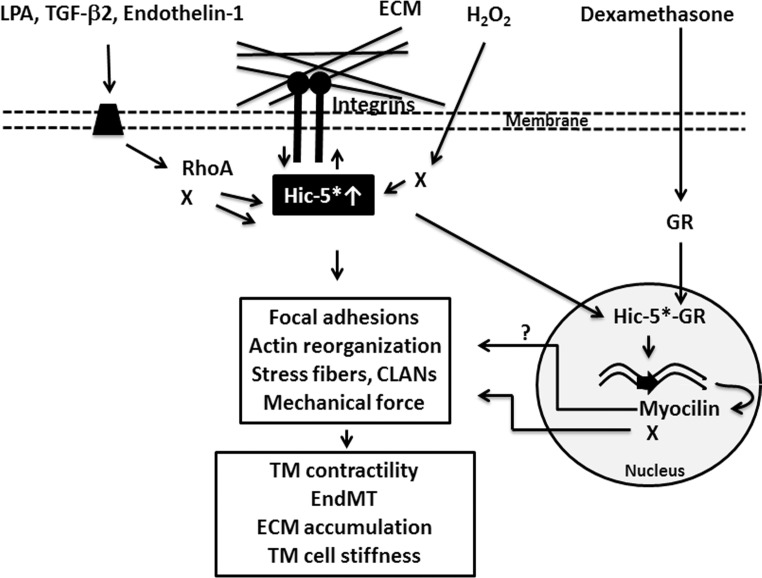Figure 8.
Schematic illustration of the role and regulatory effects of Hic-5 in TM cells. Increased levels of Hic-5 induced by external factors (e.g., LPA, H2O2, TGF-β2, endothelin-1, and dexamethasone) and a possible activation of Hic-5 via tyrosine phosphorylation (indicated with asterisk) lead to activation of intracellular signaling pathways including the RhoA, SMADs, and others (X) in TM cells. These signaling pathways regulate FA formation, integrin–extracellular matrix (ECM) interaction, actin cytoskeletal reorganization, contractility, actin cytoskeletal tangling/cross-linking, cell mechanical properties, endothelial to mesenchymal transition (EndMT), and ultimately accumulation of ECM components. Additionally, elevated levels of Hic-5 might conceivably enhance the transcriptional activity of the glucocorticoid receptor (GR) in the presence of dexamethasone via nuclear translocation and manifestation of steroid receptor coactivator function, resulting in upregulation of myocilin and other (X) target genes. Dexamethasone-induced expression of myocilin and other gene products may possibly in turn influence cell adhesive interactions and actin cytoskeletal reorganization in TM cells.

